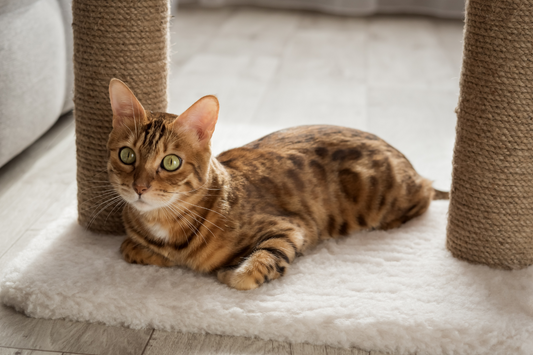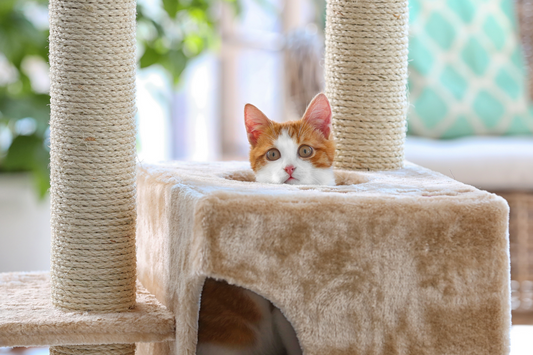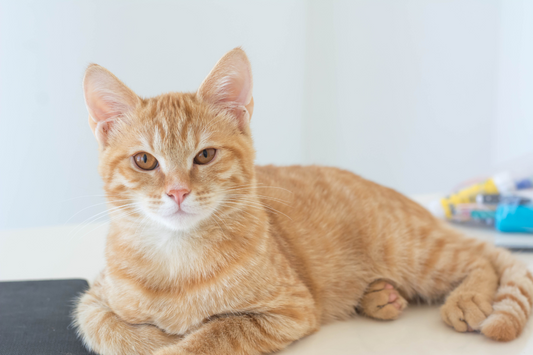
When you live with more than one cat, even the simplest things like placing a new scratcher can turn into a delicate dance of territory, hierarchy, and personality. In multi-cat households, introducing scratchers isn't just about saving your couch—it's about creating a balanced, peaceful environment where every feline feels safe and secure.
Why Scratching Matters More with Multiple Cats
Scratching is more than just a claw-sharpening habit. It’s how cats mark territory, relieve stress, and define their emotional space. In a single-cat home, one scratcher may do the job. However, in a multi-cat setting, these instincts are amplified, often resulting in resource guarding, turf wars, and unwanted destruction of furniture.
Cats rely on scratching to claim spaces physically and scent-wise. Without enough designated scratching areas, they may compete leading to dominance displays, anxiety, and even aggression.
Choosing the Right Scratchers for Shared Spaces
Not all scratchers are created equal, especially when you have multiple cats. Look for a variety of scratchers: tall vertical posts for stretch-loving climbers, flat horizontal pads for lounging scratchers, and durable materials like sisal or cardboard that offer satisfying resistance. Having different textures and orientations ensures every cat finds a preferred surface.
Placement Is Key: Cat Scratcher Placement Tips
Instead of clustering scratchers in one corner, distribute them throughout your home, especially in high-traffic or conflict-prone zones. Place one near each cat’s favorite resting spot, and add extra options near entryways or window perches—areas often claimed as prime territory.
Avoid putting all scratchers together, which may trigger competition. Instead, think of it as giving each cat their own “scratching zone,” which reduces pressure and supports harmony.
Encouraging Equal Use Without Conflict
To prevent dominance issues, observe how your cats interact with each scratcher. If one cat monopolizes a post, try rotating locations or offering identical scratchers in separate areas. Add catnip or pheromone sprays to attract more timid cats. Positive reinforcement—like treats or praise when they use their designated scratcher—goes a long way.
If introducing a new scratcher, let each cat explore it individually first, then slowly allow shared access. This gradual exposure helps prevent defensive behavior and promotes shared use over time.
Signs It’s Working
You’ll know you’ve struck the right balance when:
1. Scratching happens on posts, not your sofa
2. Cats take turns without tension
3. General aggression or anxious pacing decreases
Cats may even start using each other’s favorite posts without drama—a sign that the territory is no longer under dispute.
Multi-Cat-Friendly Scratchers to Consider
Look for wide base posts, multi-tiered towers, or modular scratching systems that let several cats interact at once without feeling crowded. Wall-mounted scratchers can also create vertical territory and reduce floor space conflict.
Conclusion:
Introducing scratchers to a multi-cat household isn’t just a home decor decision; it’s a behavioral investment. With thoughtful placement, variety, and encouragement, you can reduce tension, protect your furniture, and create a more enriched, harmonious feline environment. After all, a family that scratches together, stays together (and spares your couch)!











